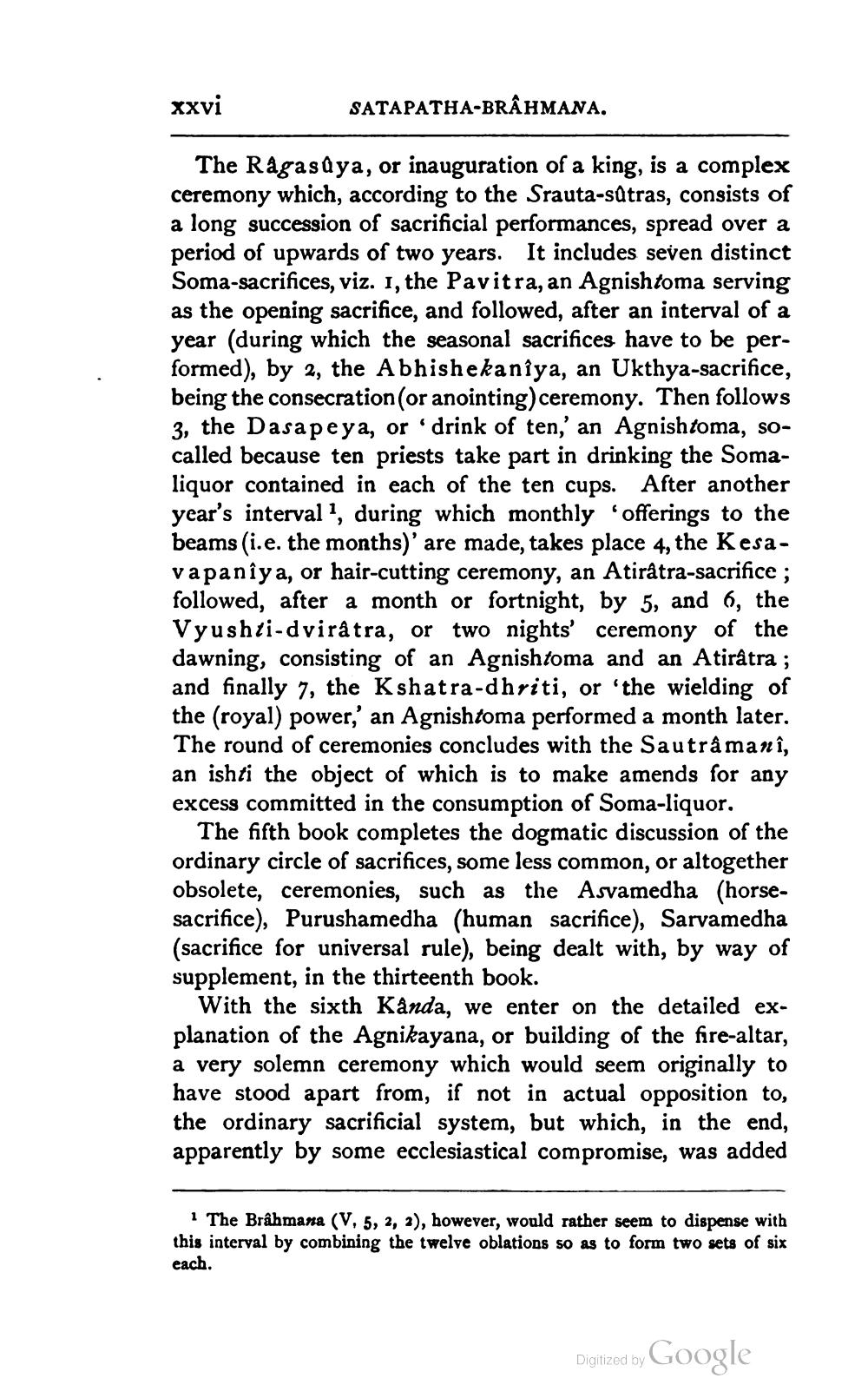________________
xxvi
SATAPATHA-BRAHMANA.
The Ragasaya, or inauguration of a king, is a complex ceremony which, according to the Srauta-sūtras, consists of a long succession of sacrificial performances, spread over a period of upwards of two years. It includes seven distinct Soma-sacrifices, viz. 1, the Pavitra, an Agnishtoma serving as the opening sacrifice, and followed, after an interval of a year (during which the seasonal sacrifices have to be performed), by 2, the Abhishekaniya, an Ukthya-sacrifice, being the consecration (or anointing) ceremony. Then follows 3, the Dasapeya, or drink of ten,' an Agnishtoma, socalled because ten priests take part in drinking the Somaliquor contained in each of the ten cups. After another year's interval, during which monthly offerings to the beams (i.e. the months)' are made, takes place 4, the Kesavapaniya, or hair-cutting ceremony, an Atirâtra-sacrifice; followed, after a month or fortnight, by 5, and 6, the Vyushti-dviratra, or two nights' ceremony of the dawning, consisting of an Agnishtoma and an Atirâtra ; and finally 7, the Kshatra-dhriti, or 'the wielding of the (royal) power,' an Agnishtoma performed a month later. The round of ceremonies concludes with the Sautråmanî, an ishti the object of which is to make amends for any excess committed in the consumption of Soma-liquor.
The fifth book completes the dogmatic discussion of the ordinary circle of sacrifices, some less common, or altogether obsolete, ceremonies, such as the Asvamedha (horsesacrifice), Purushamedha (human sacrifice), Sarvamedha (sacrifice for universal rule), being dealt with, by way of supplement, in the thirteenth book.
With the sixth Kanda, we enter on the detailed explanation of the Agnikayana, or building of the fire-altar, a very solemn ceremony which would seem originally to have stood apart from, if not in actual opposition to, the ordinary sacrificial system, but which, in the end, apparently by some ecclesiastical compromise, was added
The Brâhmana (V, 5, 2, 2), however, would rather seem to dispense with this interval by combining the twelve oblations so as to form two sets of six each.
Digitized by Google




